“The Fighting Cocks” 67th FS, 347th FG, 13th USAAF
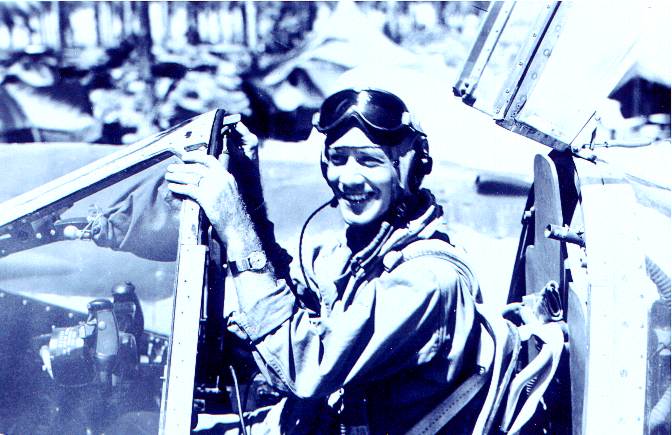
Lt. John Raymond Johnson of the 67th Fighter Squadron, 347th Fighter Group, 13th USAAF at Middleburg, Dutch New Guinea During September 1944 – January 1945
The 13th Air Force did not fight the most glamorous of wars, theirs’ was a war of ground attack, relentlessly destroying Japanese ground forces and infrastructure. They fought, not from centralized bases closely tied together, but from island bases, spread hundreds of miles apart. Units of the 13th Air Force moved from the Fijis and Australia through New Caledonia and New Hebrides, up the ladder of the Solomons to the Admiralties and the Netherlands Indies, and finally through the Philippines.
From the most easterly point, Bora Bora, in the Society Islands, to the most northerly, Lingayen, in the Philippines, the 13th AF traveled approximately 7,000 statute miles over an area of at least 4,000,000 square miles. Lightnings flew missions up to 2,100 miles. The 13th Air Force fought over two continents; Australia and Asia. It fought in four areas of operations; the South Pacific, the Southwest Pacific, the Central Pacific, the China-India-Burma, and also Air Offensive Japan. It set up camp in the territories of six different nations; Great Britain, Australia, New Zealand, Netherlands, France, and Japan. They flew over 12 seas; the Coral, Arafura, Banda, Celebes, Sulu, Ceram, Mindanao, South China, East China, Java, and the Sea of Japan.
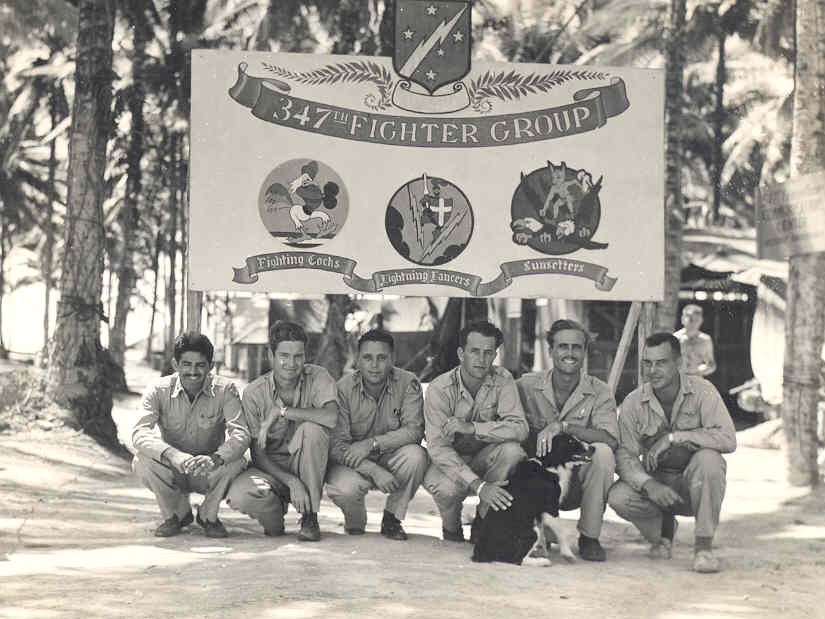
In late 1944 and early 1945, when Lt. Ray Johnson was member of the 67th FS, their missions were fairly typical. Following is a brief resume of the tasks given them;
Stop the Japanese advance south and secure positions in New Guinea and the Netherlands Indies from which Allied Forces could launch an attack against the Philippines.
Destroy oil refineries at Balikpapan, Dutch Borneo, which refined 7,000,000 barrels of crude oil per year. It was the chief source of Japanese aviation high octane gasoline and lubricants. It was such a high quality that it could be used in diesel engines without refining.
Destroy Southwestern Pacific Japanese airdromes which were at Negros, Cebu, Mactan, Palawan, Western New Guinea, Ceram, Boeroe, Kai, and Halmahera Islands to furnish protection to the left flank of the Allied advance on the Philippines.
Destroy Japanese shipping in the Philippines and Dutch East Indies waters. In the month of November, 1944 alone, approximately 208,200 tons of shipping were sunk.
Support the 8th Army landings in the Philippines. During the Viscyan-Mindanao Campaign the 13th AAF served as air support of 14 amphibious landings. They softened up landing areas, provided cover for Naval convoys, and supplied close cover support to the ground troops as they moved up from the beaches.
Support of the Australian Imperial Forces and the Royal Australian Air Force in the Borneo Campaign. This was because the objective area lay largely beyond the range of the RAAF aircraft. This support consisted of pre-assault softening up strikes, covering numerous convoys, and battle area fighter cover.
In 1945 P-38’s of the 67th performed one of the longest flights ever flown by fighter aircraft. This was 2100 statute miles round trip. They did it by using 500 gallon belly tanks. The risk of these missions was very high since if you got into trouble 700 miles from home base, in Japanese held territory, you probably weren’t getting back.
In the Philippines, it was found that the Japanese were attempting to supply the Indies and evacuate high ranking personnel using scores of small ships such as luggers, barges, sailboats, and small freighters. The 13th AAF destroyed them all.
In the western New Guinea area, the Moluccas, the Celebes, Borneo, and every portion of the Netherlands East Indies, the Japanese built up an elaborate network of airfields. This network, consisting mostly of undeveloped staging fields, gave Japanese air power great flexibility and also the protection afforded by wide dispersion. By late 1944 the Japanese had built more then 30 airfields within a 400 mile radius of Morotai, which was by then the largest Allied tactical airbase in the Southwest Pacific. The 13th AAF was assigned the job of neutralizing this enemy air power in these areas. Through the end of 1944 and early 1945 the fighters concentrated on this assignment.
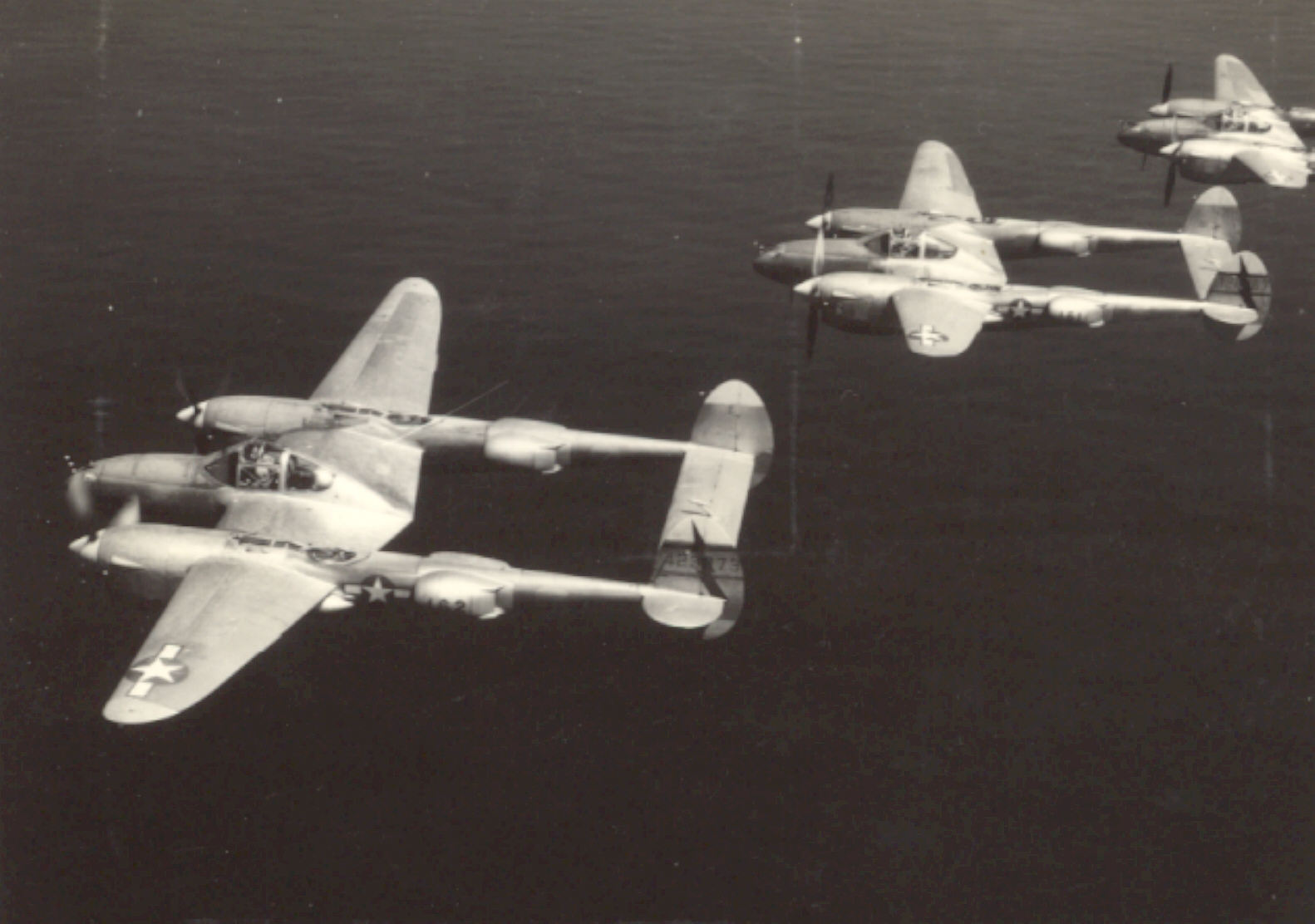
Ray described some of the missions he flew on in that late 1944 period…
Fire bombing Mapia Island: The mission was to rid the island of a single Japanese soldier who was radioing Allied naval information in that area. The squad dropped their napalm without arming it spreading raw napalm all over the island. The leader then dropped his (which was armed) and the whole island went up in a huge ball of fire. There was not a tree left. The island was barren. And there were no more radio broadcasts. The next day the army landed to rid the island of the radio operator who was no longer there.
Fire bombing Old Namlea (Japanese air base): This mission was not clear but Ray described how they would fly very low, slow, and wingtip to wingtip. They would all drop their napalm together which would spread out in a “v” below each plane and form a rolling “wall” of fire which was very deadly. On this mission he had a three story building right in front of him when they dropped their napalm. His wingman said Ray’s napalm went right in the front door of this building and before they got far by there was fire coming out the third story windows.
The Expensive Baseball Game: There was a lull in the action and there was always competition between the squadrons. To relieve some of the pressure on the flyers the brass arranged a baseball game between the 67th and an unknown squadron where the 67th had to fly a very long distance to attend. On the way back three P-38’s ran out of gas and dropped into the ocean. All pilots were recovered but it was embarrassing to the military.
New recruits initiation: The 67th had a “latrine” hanging on the edge of a cliff over the ocean so that the waste went you know where. Whenever a ship would go near the island the wake would create a giant wave which would shoot up to (and into) the bottom of the latrine. They always made sure the new recruit got to experience this first hand!
Was Ray an “ace”? Ray mentioned many times that he shot Japanese planes but haven’t yet found the details until Arthur Durtshchi helped me. Nope, Ray didn’t shoot down any planes in the air but destroyed hundreds on the ground. Arthur shot down a Mitsubishi twin engine “night fighter” (haven’t zeroed in on the model) but said there were not a lot of opportunities to shoot them down. They would turn and flee rather then fight because they were trying to save their planes.
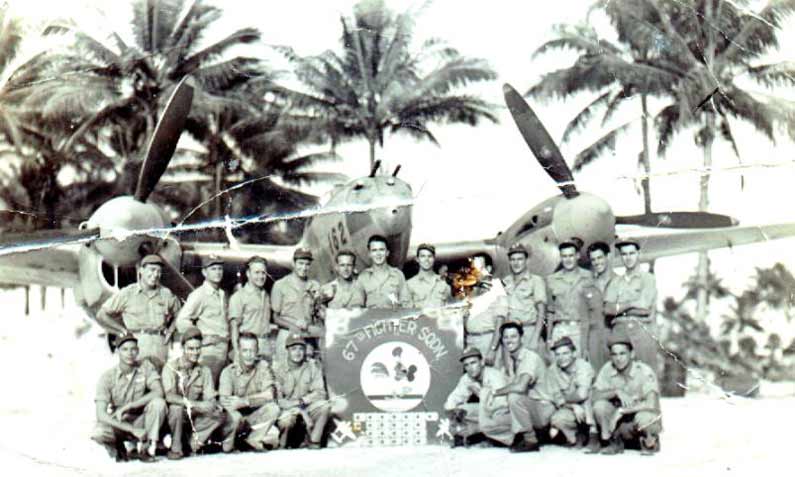
The 13th Air Force from 1943 through September 1945 flew 97,038 combat missions, destroyed 1,439 Japanese aircraft, sunk 1,350,000 tons of shipping and lost 490 planes. It was fighters from the 13th USAAF that intercepted and shot down the aircraft Admiral Yamoto was flying in. It might well be fair to say, and certainly without minimizing the contribution of the Naval and US Marine aircraft, that it was that the Army Air Forces that really saved lives by bleeding the Japanese ground forces of its air cover by destroying it on the ground, along with Japanese intelligence, shipping and infantry.
The text in this section and most of the the images are reproduced by kind permission of Jerry Lindell and taken in large part from his website, P-38 Pilot John Raymond Johnson which is dedicated to the memory of his Father-in-Law, Lt. John Raymond Johnson. Reproduced with permission.
Academy 1/48 Lockheed P-38L-1
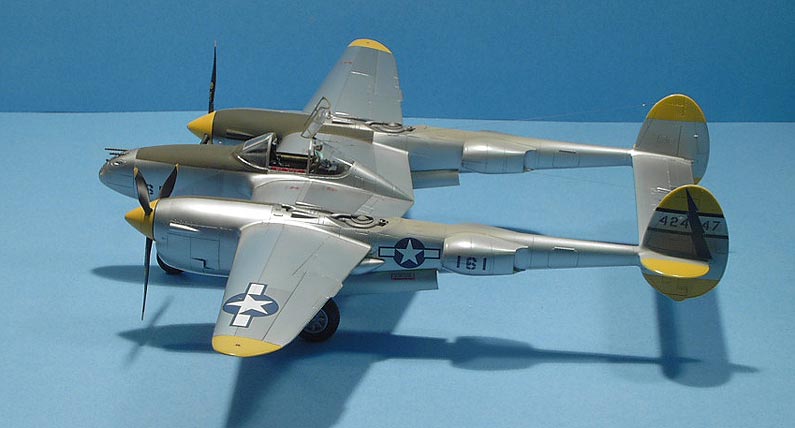
This is a 2003 build and as such a long time has passed since its completion I have to rely on the text as it was written back then to describe my experience with it.
Academy’s P-38 models compete against the Hasegawa offerings. I have not built a Hasegawa P-38 model, though it’s reputation is that the fit is not as good as the Academy but its detailing is better. I planned to use an Aires detail set for the cockpit in my model, a set designed for the Hasegawa kit, and so I hoped to make up for any detail deficiencies that way. I also hoped I could make it fit!
Construction
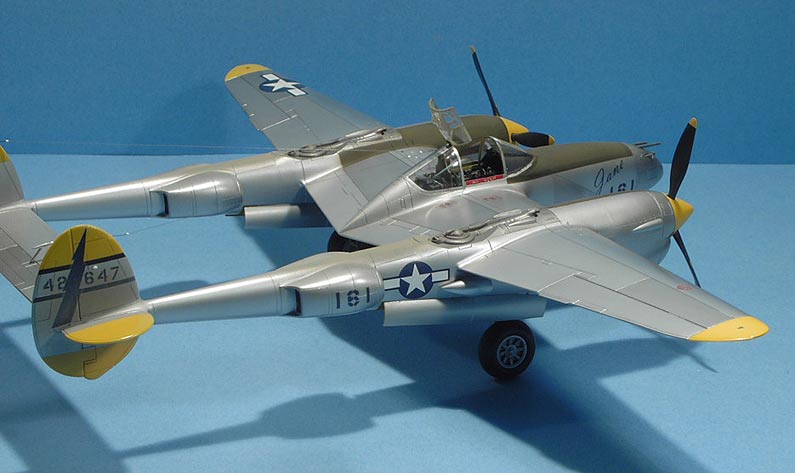
The Aries cockpit set I used was designed for the Hasegawa kit. It required a great deal of trimming and thinning to fit in the Academy kit. I had to remove material particularly from the underside of the cockpit floor until it was literally paper thin. I addition, I had to mount the cockpit further abaft than I wanted to – it is probably about 1.5mm too far back to be accurate. On the plus side the cockpit looks great and is a definite addition to the kit.
As I was making a NMF finished model, a little extra care was taken with all seams. The only areas of issue were the underside of the wing-to-boom fit where a little filler was required. Don’t forget to add weight to the nose to make sure it doesn’t tail-sit.The glass pieces fit well, I decided not to use the vac-formed canopy I had purchased as it didn’t seem necessary to display the cockpit. Unfortunately, it seems I forgot to take any in-progress pictures.
Several decisions were made during construction to produce an L-1-LO version from this kit. These decisions were as follows;
- I left on the “Compressibility Flaps” as molded on the underside of the wings.
- I decided, for reasons further explained in the Painting section, not to open the landing light on the port wing leading edge.
- I scratch built a gun camera attachment for the port under-wing pylon and filled the hole in the nose for same.
- Lastly, I forgot to make the cuts required in the fuselage to display the boarding ladder in the deployed position. I discovered this too late to make the change, so my P-38 is displayed without it.
Paint and Decals
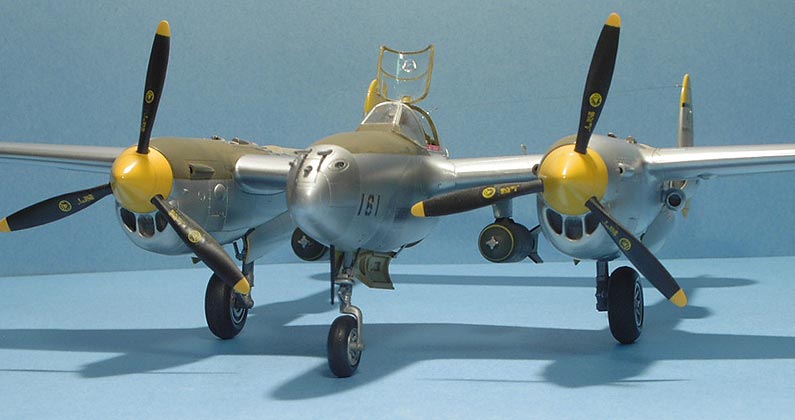
I worked from photos of the real aircraft, available on Jerry’s website already noted. I painted the yellow and olive drab first (using Gunze and Tamiya acrylics respectively) and then masked it with Tamiya tape. The NMF was SNJ, with individual panels masked with wet paper and coloured slightly different shades by varying a mix of Testors Metalizer Aluminum Plate and Burnt Metal. I polished different areas to a lighter or greater extent to further vary the surface textures and colours.
Gear bays and doors were painted Yellow Chromate (ModelMaster acrylic) – I could have used Interior Green as well – these colours were both used by Lockheed.
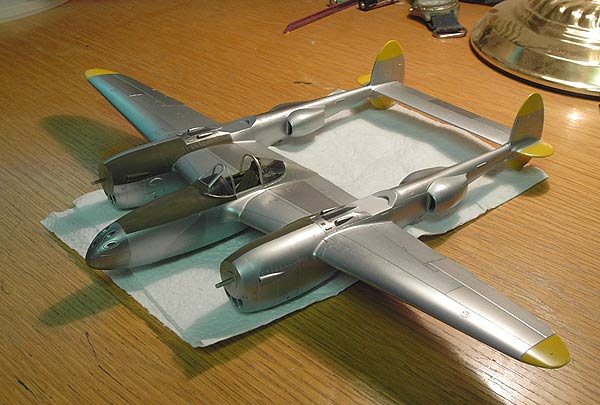
Markings were a different issue. I didn’t know what the Serial Number for Ray’s “Jane” was, all I had to go on is the picture below. I have included an inset of an enhanced view (as best I can do it) of the tail.
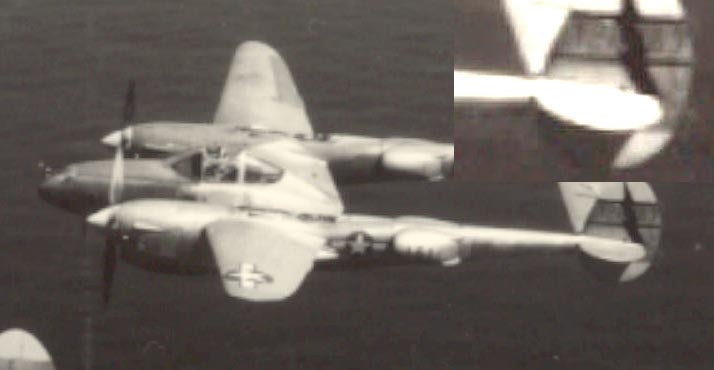
The real key is the third digit. According to this web site – USAFSserials.html – S/N 423769 to S/N 425058 were all L-1-LO’s. If the third digit is a 4, #161 – see pictures below for confirmation this is the squadron number “Jane” wore – has to be a L-1-LO. And, try as I might, I cannot conceive of it being anything other than a four. I settled on 424647 as my best guess. However, that leaves another problem. L-1’s had a leading edge landing light installed and the picture above clearly shows no landing light.
On balance, I decided to go with the L-1 configuration without a landing light as I put more faith in the serial number evidence than the circumstantial evidence of the landing light. I would welcome additional input any reader might have on this.
With the configuration set, I made the decals for the aircraft number and “Jane” and applied them with no problems.
Notice how the model sits compared to the actual aircraft. Next time I build one of these I will extend the front undercarriage oleo to better represent the nose up attitude it should have.Overall, decals were a combination of home made, Aeromaster, and SuperScale. I did not use any of the kit decals as one stencil I tried would not sit right, and would not react to Micro Sol. I used the stencils from an old SuperScale sheet instead. I used an Aeromaster sheet for the blue flash on the tail, which when matched with the serial number I had made and the yellow tail flash markings for the 67th, really brought the model to life.
Weathering and Final Assembly
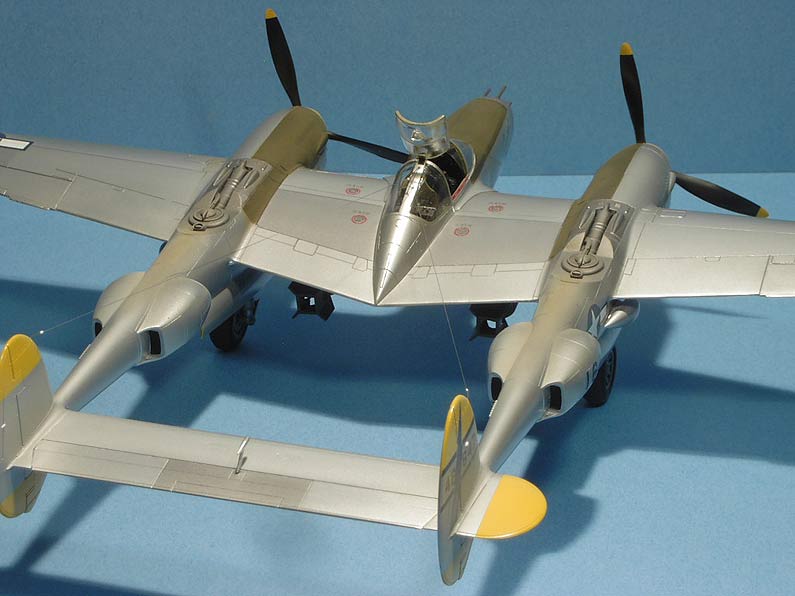
The kit propellers are wrong inasmuch as the seam is not through the blade holes on the real aircraft. I assembled the spinners without blades and filled the seam. I then rescribed the spinner cap seam and made some flush rivets.
I used a combination of invisible thread and stainless steel wire for the antenna; I ran the stainless steel through the canopy into the radio compartment . To pose the canopy open, I scratched a simple hinge out of .010″ card stock and painted a dark colour – this seems to be consistent with most pictures I’ve seen of the real thing.
I drilled out the guns and used Metalizer to paint them. Of note is that I used a Q-Tip to apply the Metalizer paint, which worked very well and saved having to clean the airbrush! I used the kit supplied vinyl wheels for now, though they are only press fitted and at some point I will probably replace them with resin. I used some aluminum foil for the oleos. Weathering was kept to a minimum, this would have been a fairly new aircraft in late 1944, I applied a wash to the fuel filler caps and sprayed some very diluted acrylic paint (a mix of light gray and tan) from the superchargers and across the lower areas of the vertical stabilizers. Unusually for me, I decided to display this model with ordnance attached. Two 500lb bombs are attached, painted in dark green with texture added by applying talcum powder to the plastic before painting. I hand painted the yellow ring by putting the bombs in a Dremmel at slow speed and painting the ring on the turning bomb.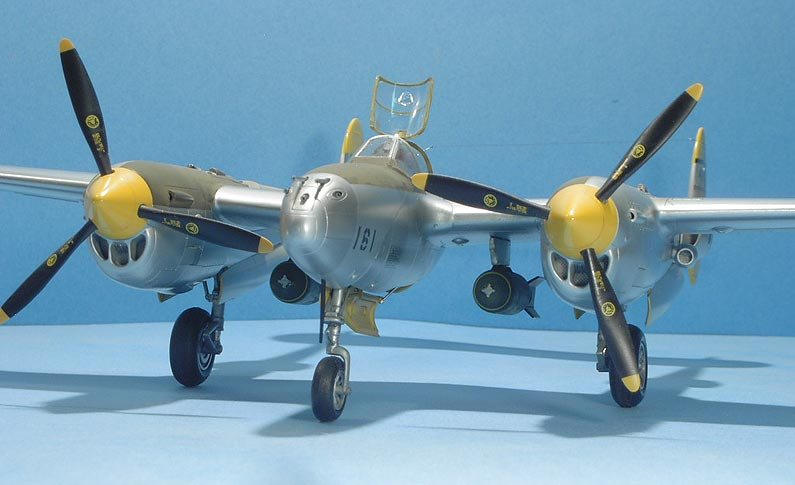
I added the bombs to this model to recognize that the men who flew these aircraft, and the men on the ground who kept them in the air, worked as hard, if not harder, than others in more glamorous roles to bring an end to the war. What’s more, they did it by relentless ground attack over vast expanses of water against a ruthless and tenacious enemy.
With the addition of all the “bits and pieces” the kit was complete.
Gallery
References and Credits
Printed Sources:
- “P-38 Lightning In Action” by Larry Davis
- “Cockpit” by Donald Nijboer and Dan Patterson
- “Flying Legends” by John Dibbs
- “Flying Colours” by William Green and Gordon Swanborough
- “Aircraft of World War Two” by Michael Sharpe, Jerry Scutts and Dan March
Web Sources:
- http://members.tripod.com/warbirdlover/index.htm (Jerry Lindell’s site that served as the inspiration for this article)
- http://members.tripod.com/warbirdlover/id23.htm (Links page on Jerry’s site, which lists almost all other sites I visited).
- http://p-38online.com
- http://p38assn.org/
- http://home.att.net/~jbaugher/usafserials.html
- http://www.harringtonmuseum.org.uk/BombLoads.htm
- http://www.kazoku.org/xp-38n/
Individual Correspondents:
- Lynn Ritger
- Dana Bell
- David Copley
Copyright: As usual, I make no claim of original work in this article except for the photos of the models and text describing their construction and painting. Except where noted otherwise, I sourced all images and photos from the internet and are used under fair-use. Any copyrighted material will be removed or credited forthwith upon request by its owner.
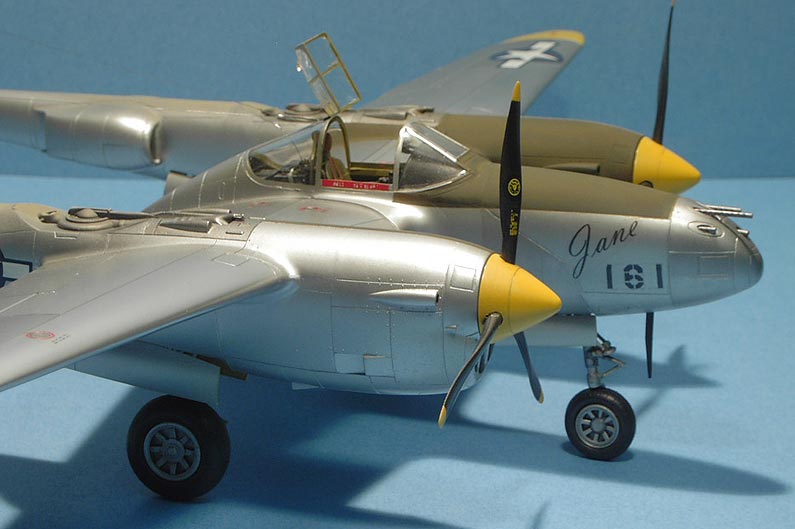























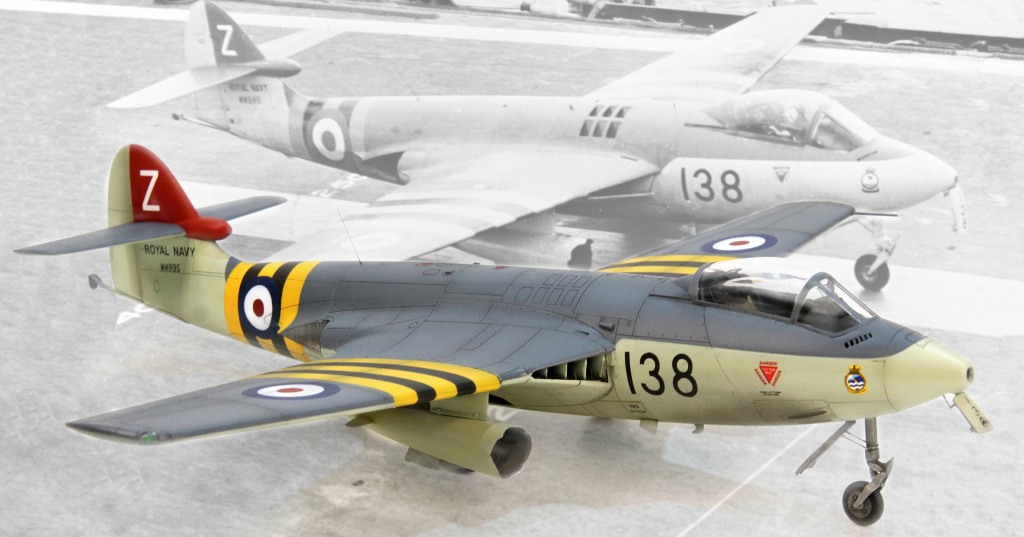


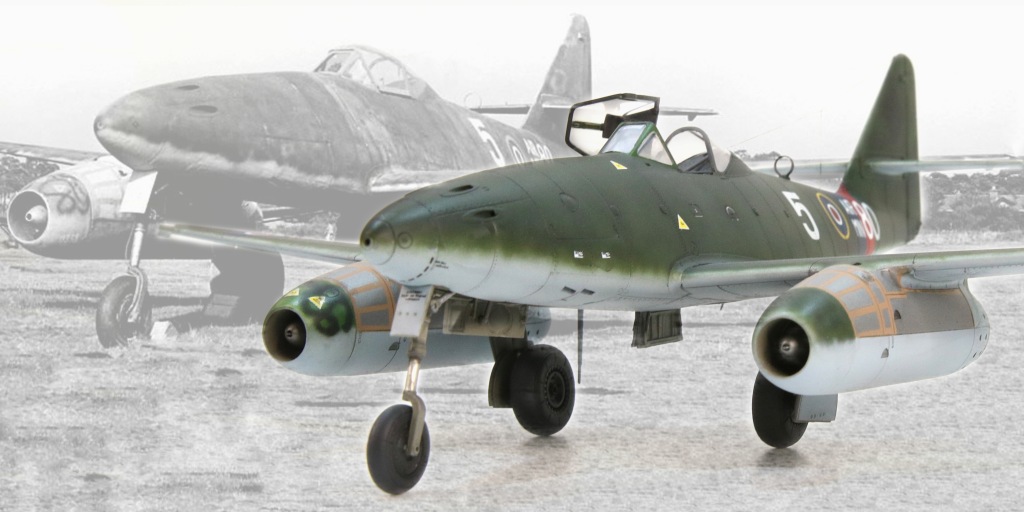
Leave a comment